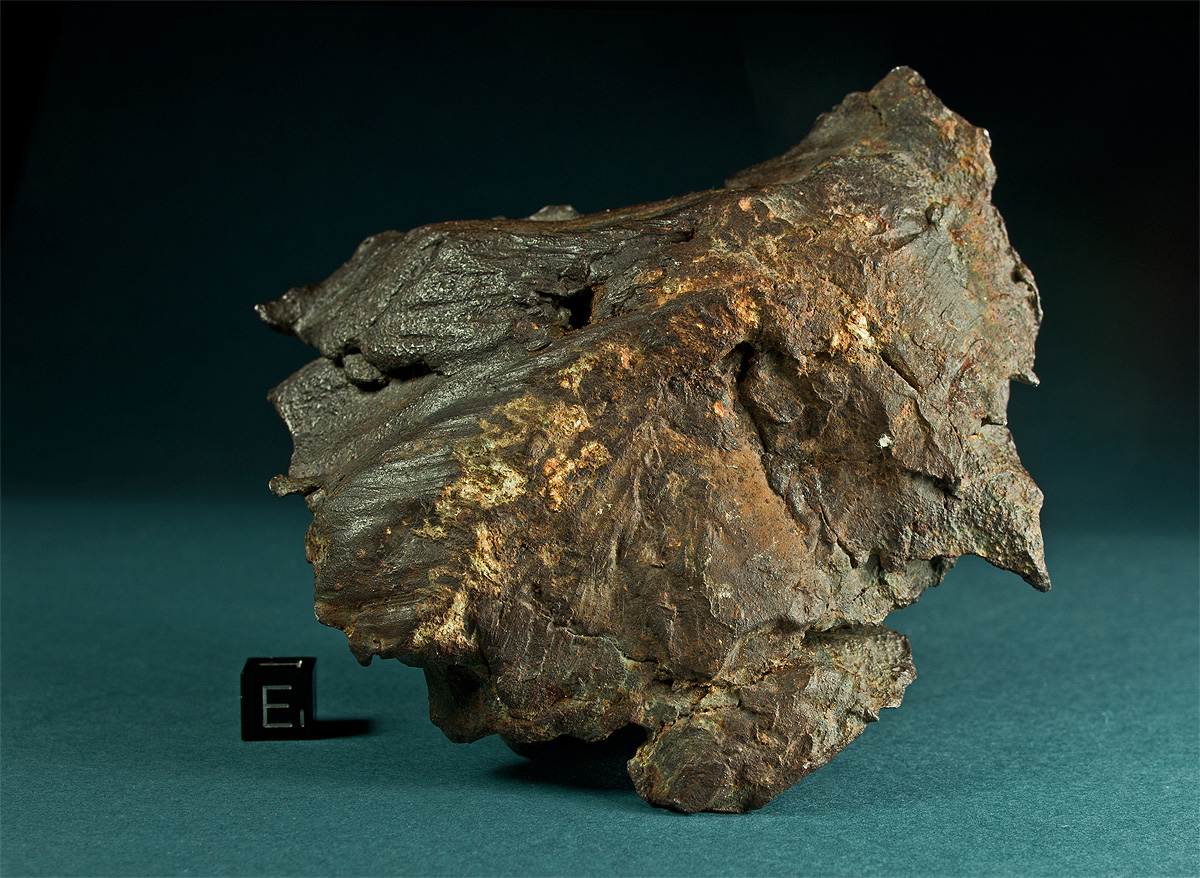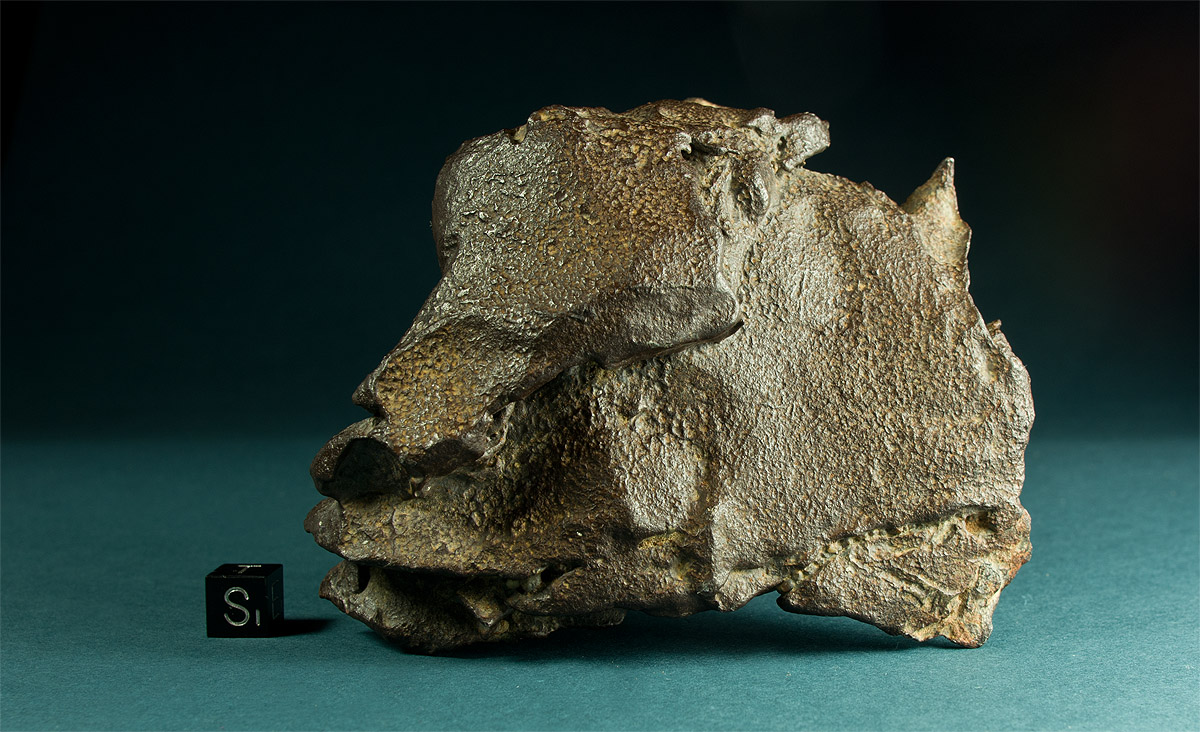Gebel Kamil
Al Wadi Al Jadid, East Uweinat Desert, Egypt
Find: 2009
TKW: ~ 1.6 MT
Individual (shrapnel): 1,754 g
Compact shrapnel with one convex surface and jagged edges. The surface exposed in situ displays the characteristic weathering pattern of this location, which is composed of a dense array of submilimeter sized pits, very similar to the exterior texture of iron meteorites recovered from the Atacama desert in Chile. The surface protected in situ shows well conserved shear marks and secondary impact grooves. In patches, a 0.5 – 1.5 mm thick layer of impact glass from the target rock is adhering to the specimen. Under the impact glass, the surface of the meteorite is in pristine state. The Gebel Kamil meteorite shrapnels were found in and around an impact crater with a diameter of 45 meters, which in arial imaging shows a radial ejecta pattern extending up to 450 meters from the center. The crater structure was known since the early 1980s on Soviet topographic maps, where it was listed as a “source of iron”, but not recognized as a meteorite crater. In 2009 it was re-discovered by Italian scientists. The crater formed less than 5,000 years ago. In contrast to current research, and based on the degree of weathering of the meteorites and of the crater itself, we are convinced that the structure is younger than 2,000 years. Only a handful of meteorite impact craters with diameters less than 100 meters are known, thus the Kamil Crater discovery is quite a scientific sensation.
Inventory #
B-360.2
Date
October 3, 2015
Category
Finds, Irons




